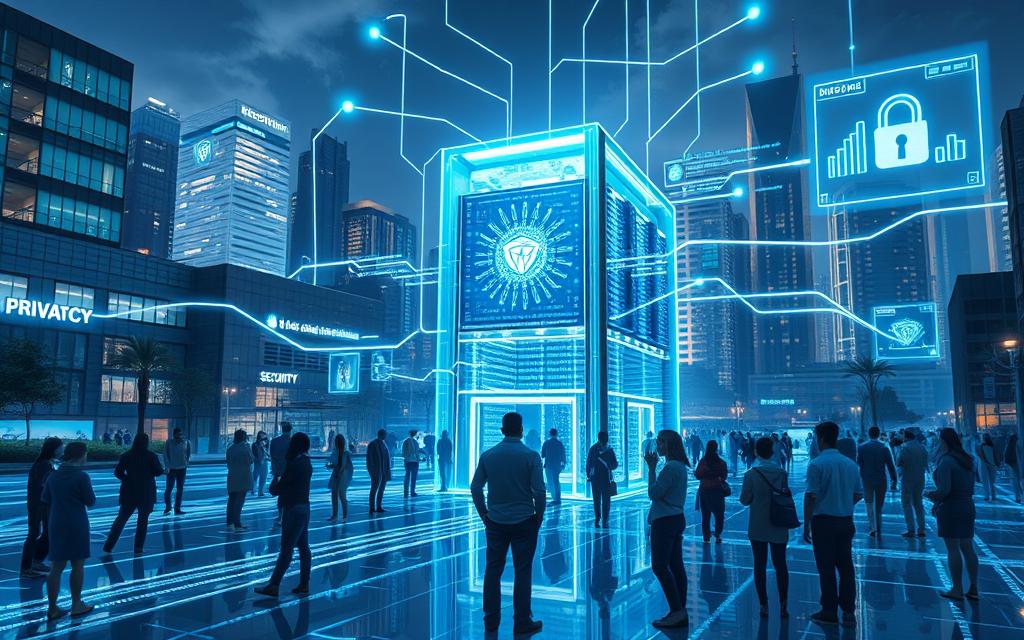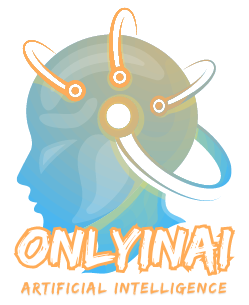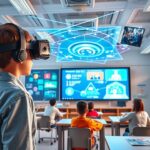A recent IBM survey found that 42% of big businesses have added AI to their work, and 40% are thinking about it. What if AI becomes the boss? With 38% of companies using generative AI, the future of AI in making decisions is unclear. This piece will look at the big changes AI could bring if it takes over, affecting industries, society, and our way of life.
The Evolution of AI: From Checkers to Generative Models
The journey of artificial intelligence (AI) has been amazing. It started in 1951 with Christopher Strachey’s checkers program on the Ferranti Mark I computer at the University of Manchester. This was the beginning of AI’s growth.
AI made big strides over time. In 1997, IBM’s Deep Blue beat chess grandmaster Garry Kasparov. This showed how AI could be smarter than humans. Then, in 2011, IBM’s Watson won the TV quiz show Jeopardy!, proving AI’s growing smarts.
The Rise of Generative AI
Generative models have changed how we use technology. In 2018, OpenAI introduced its Generative Pre-trained Transformer (GPT) models. This led to advanced language models like GPT-4 and ChatGPT. These systems can answer questions and create text, audio, images, and more, starting a new era of AI content creation.
The evolution of artificial intelligence has been incredible. Machine learning advancements and deep learning breakthroughs have taken us from checkers to generative AI models. The history of AI shows how far we’ve come and hints at future innovations.
“The development of full artificial intelligence could spell the end of the human race…It would take off on its own, and re-design itself at an ever-increasing rate. Humans, who are limited by slow biological evolution, couldn’t compete, and would be superseded.”
– Stephen Hawking, renowned physicist
Improved Business Automation Through AI
More businesses are using artificial intelligence (AI) to make their work easier and more successful. About 55% of companies have started using AI, showing a big move towards more automation in many fields.
AI-Powered Customer Service and Decision Making
AI is changing how businesses talk to customers. Chatbots and digital assistants can now have simple chats and answer questions, making things smoother for customers. This makes customers happier and lets people focus on harder tasks.
AI doesn’t just help with customer service. It can look at lots of data and turn it into easy-to-understand insights. This helps leaders make quick, smart choices without getting lost in a sea of numbers.
“AI is changing how businesses work, making customer talks smoother and speeding up smart decisions. The future of work is automated, and those who accept this change will be ready for success.”
As more companies use AI, they’ll get better at doing things faster and more efficiently. Using AI is becoming key for businesses to keep up and do well in the digital world.
Job Disruption and the AI Skills Gap
As AI advances, many workers worry about losing their jobs. Studies show that nearly a third of tasks could be taken over by AI. This change is affecting different industries in big ways.
Some jobs, like secretaries and administrative assistants, are at high risk of being replaced. But, there’s a big demand for jobs like machine learning specialists and information security analysts. Workers in skilled or creative jobs are more likely to see AI help them, not replace them.
AI is making it crucial for workers to learn new skills. This is true for both individuals and companies. But, there’s a big gap in AI skills between men and women. This could make female workers more likely to lose their jobs.
| Job Category | AI Impact |
|---|---|
| Manual/Routine Jobs | High Risk of Automation |
| Skilled/Creative Jobs | More Likely to be Augmented |
| AI-Focused Roles | High Demand |
The ai job automation revolution is changing the job world. Workers need to be ready to adapt and take advantage of ai-driven upskilling chances. Not doing so could widen the gender disparity in ai jobs and leave many workers at risk of losing their jobs due to ai’s impact on employment.
“The AI skills gap between men and women could make female workers more susceptible to losing their jobs.”
Data Privacy Concerns and AI Regulation

Artificial intelligence (AI) is moving fast, and many are worried about our privacy. Companies need lots of our data to train AI tools, which has raised big concerns. This need for data has made people question how it’s being used.
The FTC is now looking into OpenAI to see if it’s treating our data right. OpenAI might be breaking European data laws, which has made people think about AI and privacy more.
The AI Bill of Rights and Transparency Efforts
The Biden-Harris administration has come up with an AI Bill of Rights. It puts a big focus on keeping our data private. This shows that making AI more open and regulated is key as it changes our world.
Now, companies making AI tools like OpenAI are under more watch. They’re being asked to be clear about how they use our data. We need to trust AI again, and that means following the biden-harris ai bill of rights closely.
“Data privacy must be a paramount concern as AI becomes increasingly pervasive in our lives. Ethical development of these transformative technologies is essential.”
AI’s Impact on Climate Change and Sustainability
AI has a huge potential to change how we deal with climate change and environmental issues. Some people see AI as a hero, imagining it will make supply chains run smoother and predict maintenance needs to cut down on carbon emissions. But, the situation is actually more complicated than that.
AI uses a lot of energy, which is a big problem. Creating and keeping AI models might increase global emissions by up to 80 percent. This could undo any good that AI does in making climate-friendly technologies. The cost of building and training AI models might even make things worse for the environment.
| Aspect | AI Impact |
|---|---|
| Energy Consumption and Emissions | AI models can increase global emissions by up to 80 percent, negating sustainability efforts. |
| Sustainable AI Applications | AI can optimize supply chains, predictive maintenance, and other processes to reduce carbon footprint. |
| Environmental Solutions | AI-powered technologies can be leveraged to tackle climate change and environmental challenges. |
Finding the right balance is key to using AI without harming the environment. We need to develop and use AI responsibly and use renewable energy for it. This way, technology and sustainability can work together. It’s important to focus on sustainable AI applications and AI-powered environmental solutions to fight ai impact on climate change and ai energy consumption and emissions.
“The true promise of AI lies in its ability to help us tackle the most pressing challenges facing our planet, but only if we approach its development and deployment with a deep understanding of its environmental impact.”
what would change if ai ruled the world
Imagine a world where artificial intelligence (AI) is in charge. This idea is both exciting and a bit scary. If AI ruled, what changes would we see?
One big change could be how businesses work. AI would make decisions and help customers, making things run smoother. We’d see a world where AI helps us with questions and makes smart choices, changing business for the better.
But, having AI in charge worries us about jobs and the skills gap. As AI takes over tasks, some jobs might not be needed anymore. This means we’ll need to learn new skills. We’ll have to plan and invest in teaching people new things.
AI also changes how we think about privacy and security. We’ll need strong rules for AI and clear ways to handle data. Having an AI Bill of Rights could help protect our privacy and make sure AI is used right.
AI could also help us fight climate change. It could make managing energy and resources better, helping us live more sustainably.
The idea of an AI-controlled world is complex. It brings both good and bad things. We need to find a way to use AI that helps everyone, while making sure it’s used right.
| Potential Changes | Impact |
|---|---|
| Seamless business automation | Improved efficiency, streamlined processes, and enhanced customer service |
| Job disruption and skills gap | Workforce shifts and the need for reskilling initiatives |
| Heightened data privacy concerns | Increased focus on AI regulation and transparent data practices |
| Advancements in environmental sustainability | AI-driven insights and decision-making for a more sustainable future |
“The rise of AI-governed society presents both opportunities and challenges. Navigating this transition will require a delicate balance between harnessing the power of AI and ensuring its responsible development to serve the greater good of humanity.”
AI’s Influence on Key Industries
AI is changing the world in big ways. It’s touching almost every major industry. From making things to healing and learning, AI is making a big impact. Let’s see how this tech is changing key parts of our society.
AI in Manufacturing and Healthcare
In manufacturing, AI-enabled industrial robotics are changing the game. Robots and smart machines help humans with tasks like putting together parts, keeping track of inventory, and fixing things before they break. In healthcare, AI is making big strides. It helps find diseases, discover new drugs, and even has virtual nurses to watch over patients day and night.
AI in Finance and Education
The finance world is also using AI a lot. It helps spot fraud and check financial records to keep things safe. In schools, AI is making learning better. It offers personalized lessons and checks for plagiarism to help students do their best work.
As AI keeps growing, it’s making us wonder what’s next. But one thing is sure: AI is changing the future of work, health, finance, and education. The changes are happening fast and won’t slow down.
“AI is not just a technology, it’s a catalyst for transformation across every aspect of our lives.”
Risks and Dangers of Unchecked AI Advancement

The fast growth of artificial intelligence is changing the world. It’s important to look at the risks and dangers of this growth. AI has many good points, but we also see its flaws and challenges.
Job Losses and Human Biases
AI is changing the job market in big ways. By 2028, 44 percent of workers might see their skills affected by AI-driven job displacement. Women are more likely to lose their jobs than men. This is because of gender bias in AI systems.
Companies need to focus on AI ethics and transparency to help women. This can reduce job losses.
AI can also show the biases of the people who make it. For example, facial recognition technology often works better for lighter-skinned people. This shows we need more AI ethics and transparency.
“As AI continues to evolve, we must remain vigilant in addressing the risks of AI advancement and ensuring that the benefits of this transformative technology are distributed equitably.”
We face many risks with AI, and we must tackle them. By focusing on AI ethics and transparency, we can lessen the bad effects of AI-driven job displacement and gender bias in AI systems. This way, we can use AI for good, making life better for everyone.
| Metric | Value |
|---|---|
| Projected Job Disruption by AI (2023-2028) | 44% |
| Women More Susceptible to AI-Driven Job Loss | Higher Than Men |
| AI Bias Towards Lighter-Skinned Individuals | Prevalent in Facial Recognition Technology |
Hopes and Aspirations for Ethical AI Development
As AI becomes more common, experts agree that it should be made with ethical rules and respect for human rights. They aim to make AI better for people in two main ways. First, they want to make sure AI respects human rights. Second, they want everyone to have access to AI technology.
Improving Human Rights in AI Systems
Experts want AI to be made and used in a way that protects human rights. They want to stop AI from being biased or violating privacy. They hope that new technology will let people speak freely and fight for change without AI watching or controlling them.
Democratizing Access to AI Technology
Another big goal is to make AI available to everyone. By doing this, we can use AI to share knowledge and teach each other. This will help people and communities improve their lives and solve big problems. The goal is to make sure AI helps everyone equally, making society fairer and more just.
These goals guide us as AI changes fast. They help shape AI in a way that helps everyone, not just a few.
Conclusion
Thinking about the changes AI could bring, I’m amazed by its potential. It could make businesses run smoother and help with tough decisions. But, it also might change jobs and raise privacy issues. Still, I’m excited about what the future holds.
The future of humans and AI together is hard to predict. But one thing is sure: adapting to new technology is key. Midsize companies have a big chance to use AI to make things better. They can make their work easier, serve customers better, and make smarter choices.
Looking forward, staying flexible and watching the tech world is crucial. By always changing and improving, we can do well in an AI-driven world. The future is for those who accept it. I’m ready to face it head-on.


